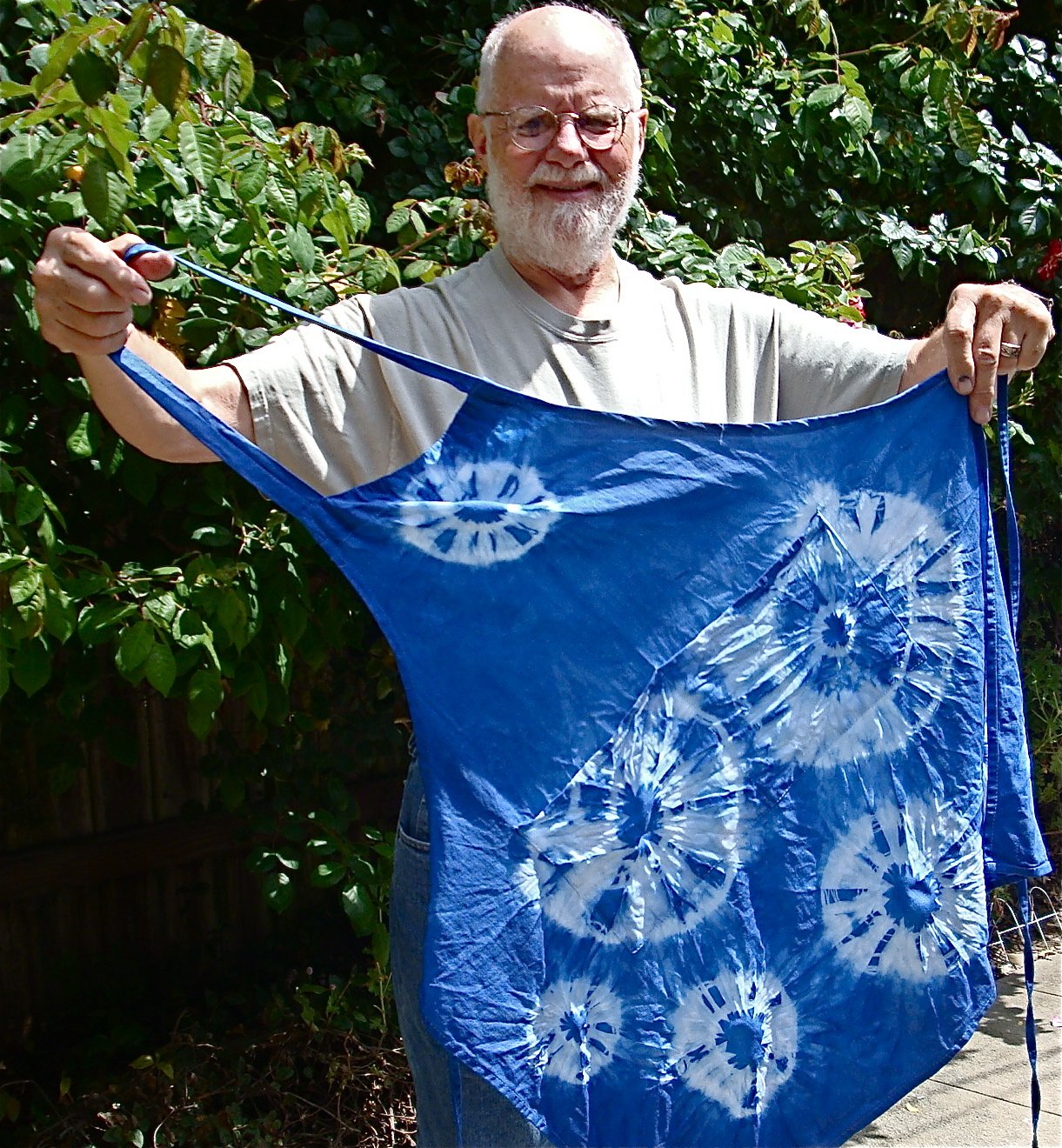INDIGO CRYSTALS
(Indigofera tinctoria) aka pre-reduced indigo
We have a two part video on YouTube with Bjo walking us through the indigo crystal dye process!
STORAGE: These natural crystals oxidize in air, so store in lidded, labeled jars, in cool dark area.
pH & TEMPERATURE: Indigo needs high alkaline vat: 8 pH for silk & wool;
9 – 10 pH for cotton & linen.
Dye vat should be no hotter than 70º to 120ºF.
You can even take it off heat & dye until the pot cools too much.
DYE INSTRUCTIONS: WEAR GLOVES! Indigo will stain fingernails for a week or more.
- Fill pot with 3 gal water, heat to 70º to 120ºF.
- Add 2 T indigo, 2½ T soda ash, 2 T thiox – too much thiox is a bleach!
- [Optional] 1 tsp Glauber’s salt to help extend dyeing time if a long dye session is planned
- [Optional] 1 tsp dissolved unflavored gelatin to form a barrier between wool & alkali chemicals
- [Optional] 2 tsp powdered madder is good for a warmer blue color
- Wait 10 min.
- Surface bubbles should be bright metallic shiny blue, metallic; not flat or dull-looking.
- Remove bubbles & foam with wet paper towel or damp piece of cloth wiped across vat surface.
- Wool & silk dyes in 3-15 min; cellulose fiber (cotton, linen, hemp, raimie in 20-30 min.
INDIGO MANTRA: Dip – Rest – Rinse!
STEP 1: DIP: Work fiber or fabric by hand below surface; allow to soak 10 to 30 min.
When removed from vat, fiber will oxidize in the air, quickly turning yellow-green, then green,
then blue: This is normal for indigo.
STEP 2: REST: Don’t rinse.
Hang or just lay fiber on a surface for 15-30 min to let fiber completely oxidize (turn blue).
Otherwise dye will not bond into the fiber. Wet dyed fiber always looks darker than dried fiber.
STEP 3: RINSE: Don’t skip this step!
Use ¼ tsp Orvus soap in rinse water, add fiber for 10 min to help indigo bond into fiber.
This rinse removes unabsorbed pigment.
If darker color is desired, return fiber to the vat for 3 – 5 min; for
For really dark color, return to vat for 30 – 60 min.
Repeat all 3 steps until desired shade is reached.
Fiber can be re-dipped, rested & rinsed as many times desired, until vat turns gray.
SETTING COLOR: Don’t skip this step because it is necessary to set indigo in fiber!
Wash in Orvus® or non-detergent soap 10 min or longer.
Rinse until there is no cloudiness.
Wash cotton twice in washing machine, separately or other fiber will be pale blue!
It is normal for indigo to crock (rub off); it’s why indigo-dyed jeans wear in lighter areas.
VAT ADJUSTMENT: Indigo vat can last several days if kept at least lukewarm & covered
Too much oxygen in vat prevents bonding into fiber & tires vat.
Oxygen will get in but try to avoid adding lots.
Blue vat (vat should be greenish): add pinch of thiox, stir, wait 15 min
Cold vat: color results will be pale. Re-heat vat to 75-90°F, rest 15-30 min
Unbalanced vat: froth changes color, add 1 tsp at a time of calcium carbonate.
When vat stops giving blue, it is exhausted. add pinch of thiox. Stir, wait 15 min before dyeing
CREATING OTHER COLORS: Strong blue overwhelms other colors.
Use an exhausted vat so the blue is weaker: 75% to 85% yellow + 15%-25% indigo for greens;
65% to 75% red to 40% to 35% indigo for purple.
FOR INDIGO DYEING, YOU ALSO NEED:
Soda ash (Sodium carbonate)
Diourea Thioxiade (Thiox)
Orvus soap (pH neutral surfactant)
Glauber’s Salt (Sodium sulfate) – Optional
Madder extract — Optional
Go to our online catalog for the supplies listed above, indigo dye history, kits, tie-dye instructions, mordant information & more! Questions? Contact us!
